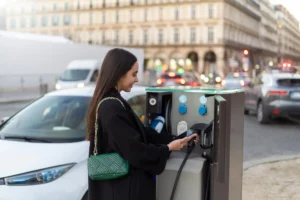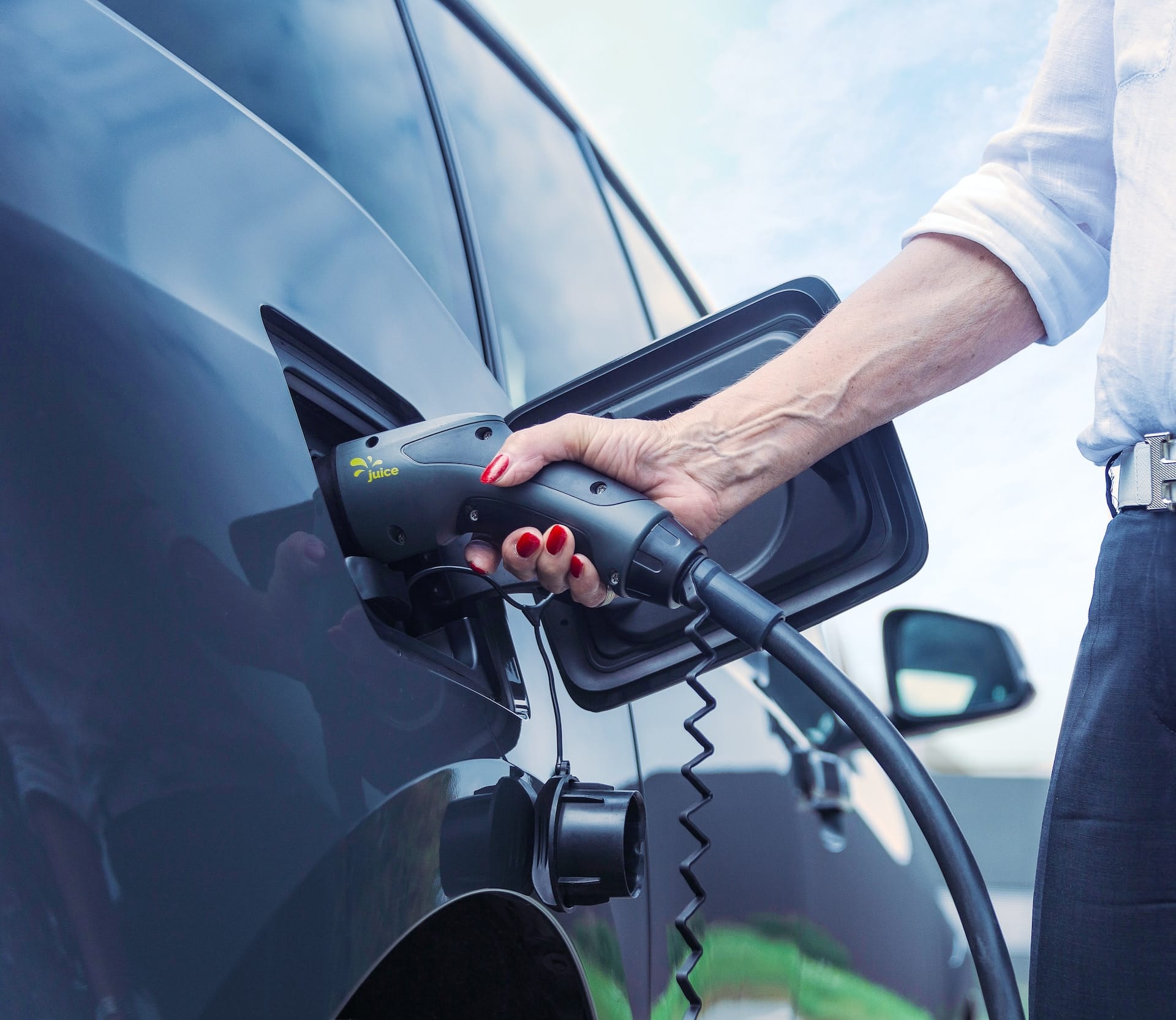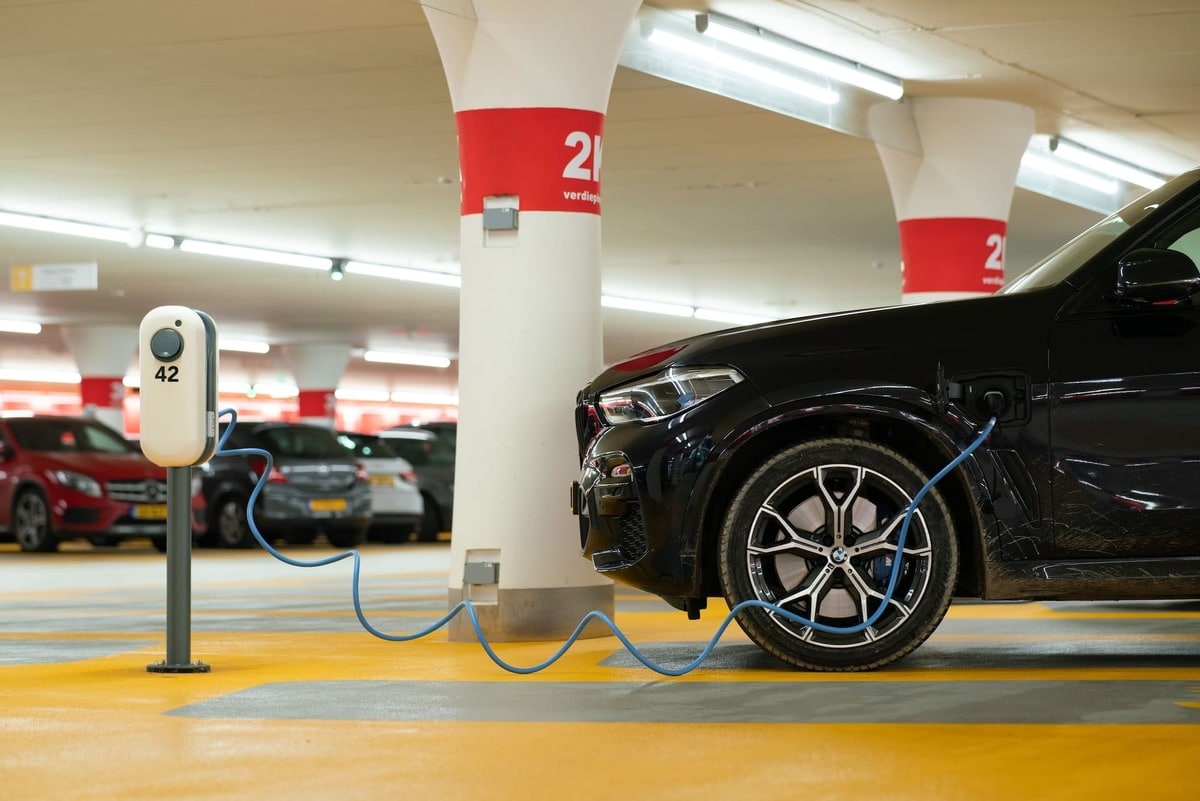
Home / EV Charging News / How to Charge an Electric Car?
Your new Electric Vehicle (EV) does not use a gas tank for its fuel source like your old Internal Combustion Engine (ICE) vehicle does, EVs instead use a high-capacity electric battery to power the electric engine, secondary driving systems, and auxiliary components. This illustrates the importance for you as an EV driver to learn how to charge an electric car in order to extend the driving range, no matter where you are.

Figure 1: EV Charging
If you are wondering how do you charge an electric car battery at home, work, and even at public EV charging stations, this is the right article for you. Here we go over the EV charging process and the steps to charge your vehicle, explain how EV charging is at home, at work, and at public charging stations, and even how to charge your EV in case of emergencies or during long journeys.
The current EV charging infrastructure in the U.S. consists of a balanced charging ecosystem that includes residential EV chargers, workplace chargers, and destination chargers. This ecosystem creates the possibility for EV drivers to top-up their EV batteries, keeping them charged at all times to their desired State of Charge (SoC).
It is important for you as an EV driver to learn how do electric cars charge and the proper protocol to follow when charging an EV. The steps you need to go through to charge your EV, are the following:

Figure 2: AC and DC power
AC charging requires a Level 1 or Level 2 EV charger. Level 2 charging is recommended since it takes 4 to 10 hours at a power rate of 7 – 19 kW, while Level 1 chargers deliver around 1 kW and take up to 50 hours.
During AC charging, the electricity flows from the electrical grid onto the EV charger, and it is then delivered to the on-board EV charger installed at the vehicle. This device is responsible for converting AC power into DC that can be used to charge the battery. The on-board EV charger is also responsible for limiting the maximum power rate for the AC charging process.
DC charging usually requires Level 3 EV chargers (the fastest kind) to charge the vehicle in 1 hour to 20 minutes at a power rate of 50 – 350 kW. Some new Level 2 DC residential EV chargers are being released to the market, working similarly to Level 3 EV chargers but at a lower power rate.
During DC charging, the AC power is converted to DC in an external power transformer and then delivered to the EV. While DC power goes directly to the battery, the power rate is limited by the Battery Management System (BMS), the device in charge of protecting the battery from overloading, overheating, and malfunctioning in general.
If you are wondering how do you charge electric cars at home, this one is easy. Charging EVs at home requires Level 1 or Level 2 EV chargers and the right electrical infrastructure, this includes a suitable electrical capacity at your service panel and exclusive wiring for the charger.
During residential EV charging, you can charge the car by setting up the parameters to charge the vehicle. Smart chargers allow you to set the charging times to take advantage of off-peak electricity costs.
Charging EVs in the workplace is usually achieved with a Level 2 EV charger designed for that purpose. In this case, you might be required to use an RFID access card or the app of the service operator that manages the EV chargers at your workplace.
If there are limited charging stalls, rules might be set to avoid EV drivers leaving their vehicles idle in the charging station for too long. This grants other coworkers the opportunity to charge their vehicles.

Figure 3: EV Charging at work
Public EV chargers can either be networked or non-networked. Networked EV chargers are usually managed by a network operator via an app, granting you control over the whole charging process, just by using your smartphone. Non-networked EV chargers feature different rates and are managed locally, the payment usually has to be made directly at the station instead of the app.
Level 3 DC Fast Charging (DCFC) is not always recommended because it can degrade your EV battery 10% faster, however, this is only when performed regularly. Using DCFC during an emergency or during long-distance journeys is the best option to charge your vehicle and stay on the road.
These charging stations can be located using a map like the one on the PlugShare website. To access a DCFC station, you can use a mobile app as you would with any network-operated Level 2 public EV charging station. The only difference is that DCFC stations are slightly more expensive than Level 2 public chargers.
